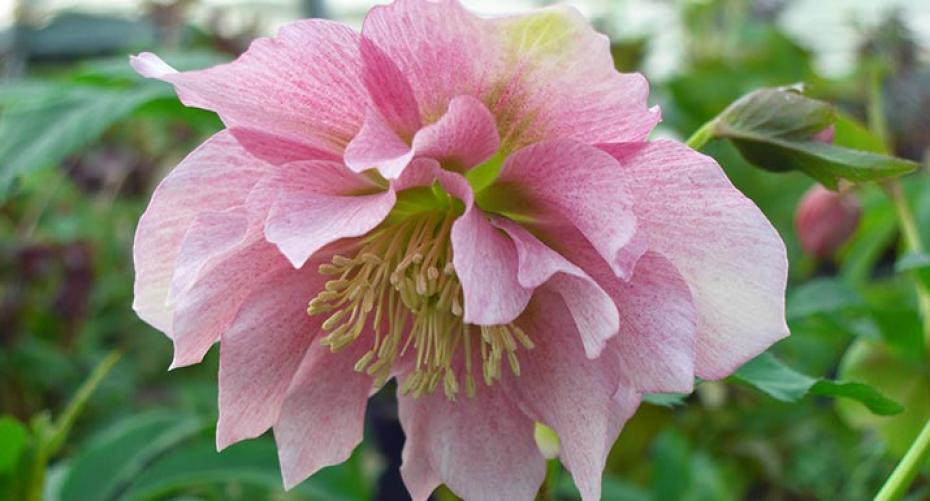Banish the winter blues with a blast of spring colour
If you love spring walks in the countryside or in your local parks & gardens then why not recreate that feel in your own garden? Bring the delights of discovering a bank of primroses or a woodland floor carpeted by anemones into the quieter corners of your outdoor space. This season’s plants are just the recipe you need to help you do this and bring reliable early flowers to beds, borders and pots.
Primula

Perennial primulas flower in spring and their blooms may be the classic yellow, as well as purple, red, pink or white. They are wonderfully fragrant, easy to grow and have a long flowering season. With all primulas, roots need to be kept moist, especially in spring and summer. It’s best to do this by incorporating plenty of organic matter into the soil, applying surface mulch and watering in dry periods. If you have planted them in containers, once they have finished flowering they can be planted in the garden for flowers in future years.
Primula vulgaris is the common primrose, with a single yellow or cream flower per stem. They have been hybridised with introduced species to produce a wonderful variety of flower colours. The nursery bred stock is not as good at competing with grass as their wild cousins so make sure they don’t get overrun.
For the earliest blooms in spring, look out for Primula vulgaris ‘Alba Plena’ (a pure white primrose) or ‘Lilacina Plena’ which is a beautiful lilac-blue. Primula ‘Primlet’ comes in a wide choice of colours from bright yellow to deep red but if you want something a little more subtle why not try Primula ‘Apple Blossom’ with is stunning sugar pink flowers which fade to white, Primula ‘Champagne’ (image) or the new Primula ‘Frosty Morn’ with hues of purples & pinks? Try planting in clumps amongst early daffodils, hellebores or ferns, they also make a colourful display in pots to welcome you home by the front door.
Primula denticulata, also known as Drumstick primula, bears attractive bell-shaped purple flowers with yellow eyes. In ideal conditions of full sun/partial shade and a moist yet well drained soil with plenty of humus it will reach a height and spread of up to 45cm.
Pulmonaria

Pulmonaria, or lungwort, flowers in spring but has interesting semi-evergreen foliage which can persist right into winter. Many are vigorous and easy to grow, clumping up quite quickly so that they can be split to produce more plants. Pulmonaria make ideal ground cover plants, love moisture retentive soil and semi-shade.
Pulmonaria officinalis ‘Sissinghurst White’ is a good example with lovely white tubular flowers set off by its silvery spotted leaves. It has the Award of Garden Merit (AGM) from the Royal Horticultural Society. Pulmonaria saccharata ‘Blauhimmel’ or ‘Blue Heaven’ produces gorgeous pearly blue flowers. ‘Redstart’ in contrast bears pinkish-red flowers and is great for early colour.
Corydalis

The Corydalis family offers spurred, tubular spring flowers held above their heavily dissected foliage. Although they are tuberous they prefer cooler, moist soil in dappled shade & can be propagated by division when they are dormant. They may self-seed too but the offspring will not be true to the parent.
For early flowers go for Corydalis cava which bears purple or white flowers and reaches between 10 and 20cm in height. Corydalis diphylla has fabulous pale violet flowers whereas Corydalis wilsonii have deeper violet or red-violet lips; they’re great in a rock garden. Corydalis lutea is an evergreen which has eye-catching blue-green leaves and canary yellow flowers & will happily grow in the shade of a wall.
Viola

Viola odorata or sweet violet is another gem that can be seen in the wild from late winter through to spring. They are fragrant but you may have to get down on your knees to appreciate this! Their pretty five petal flowers come in purple, blue or white & can be seen poking through their heart shaped leaves. They form low growing small clumps & will grow in full sun to part shade & prefer moist but well-drained soil. Viola odorata 'Wellsiana' has an AGM & is very fragrant with quite large, deep purple flowers on long stems above dark green foliage.
Hellebores

Helleborus VIV Alma
The native British Hellebores are H. foetidus or the Stinking Hellebore and H. viridis. Both have fairly unassuming green flowers above deeply divided green leaves but provide structural interest in a natural garden.
The smaller more colourful Hellebores that are available are hybrids of Helleborus orientalis & grow to a height of about 25-30cm. They provide early colour when the rest of the garden is asleep right through to the awakening of spring. Their nodding flower heads stand proud in shades from pure white to deep purples & their lobed leaves provide interest after they have gone. They are tolerant of a range of soils, but prefer moist, fertile, humus rich soils & will thrive in sun or shady spots. Not only are they available in a lovely range of colours but they may also have speckled markings with double forms looking very showy.
We get a selection of Hellebores from Bransford Webbs, they are available in plain or speckled, double or single with colours including apricots, bright yellows, deep pinks & dusky purples. They look spectacular on their own or can be grown with early anemones, small daffodils or other smaller spring bulbs. They also look good in a pot & would make an impact when grouped together in pots of different heights.
Create a little magic in the garden this spring & get out & about to see it in nature too. The sight of hedgerows and lanes covered with primroses and cowslips is a sure sign that spring really is on its way.


